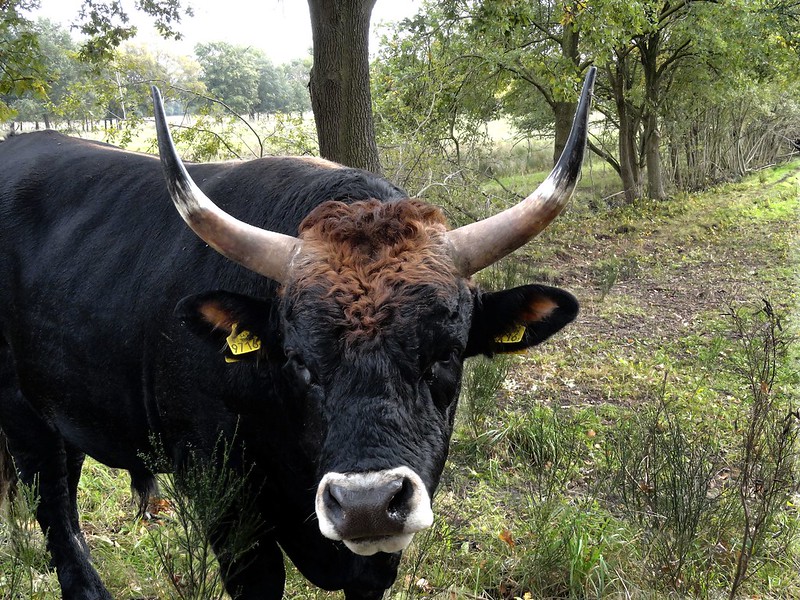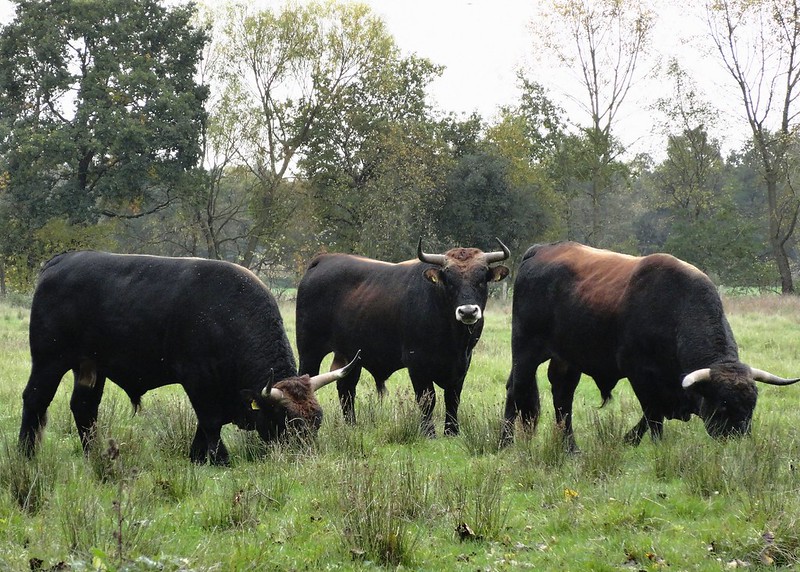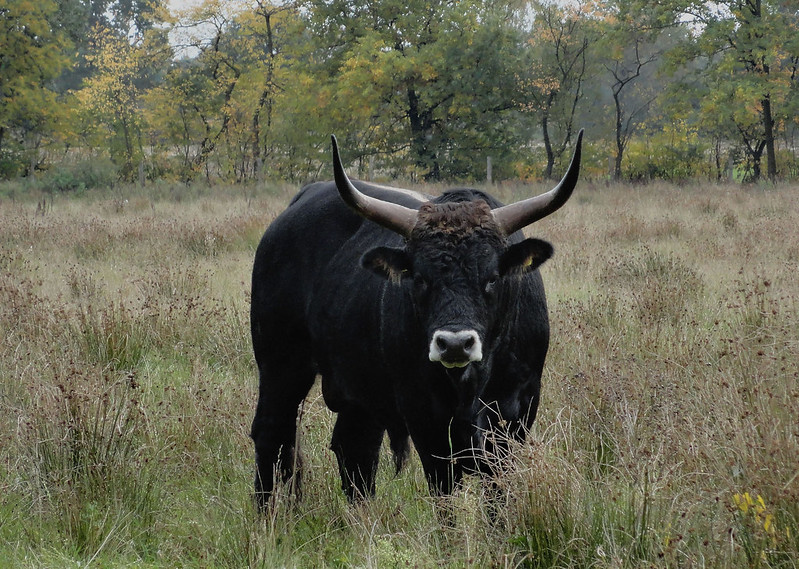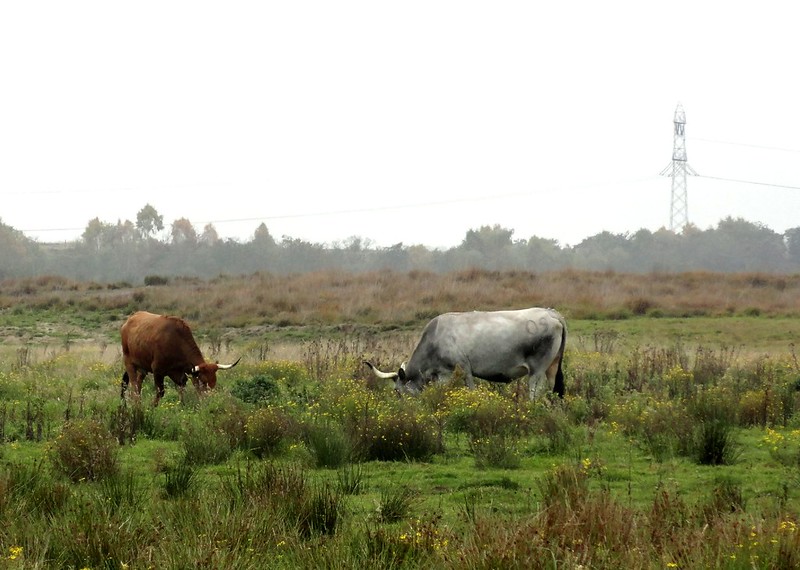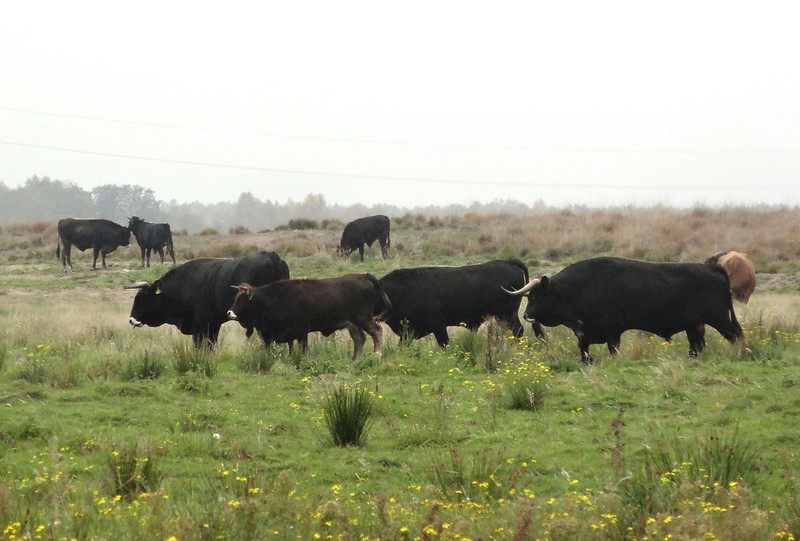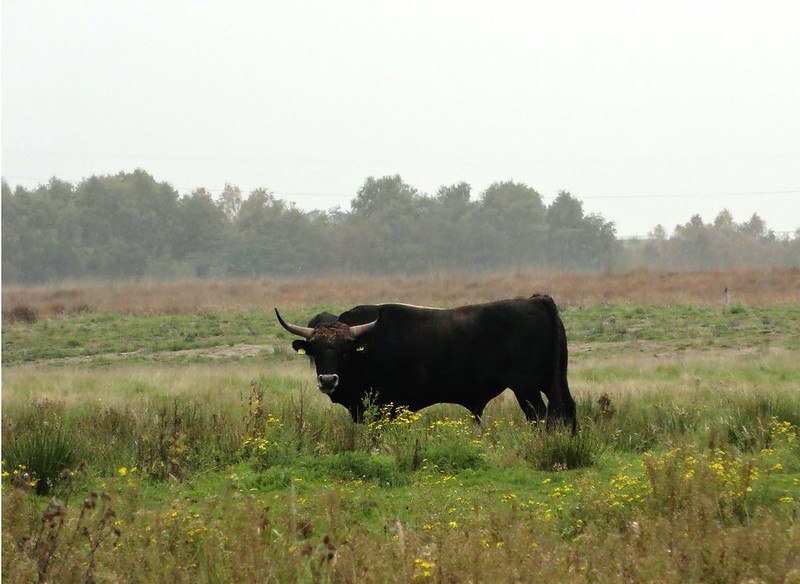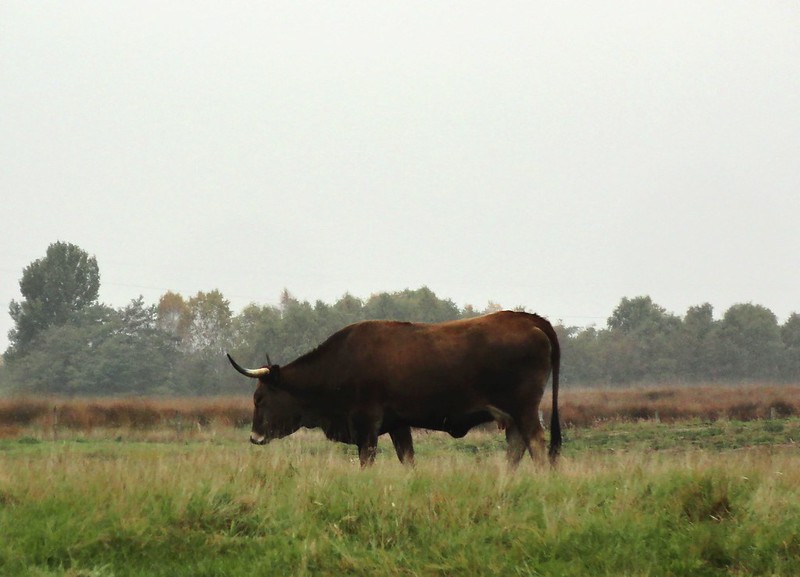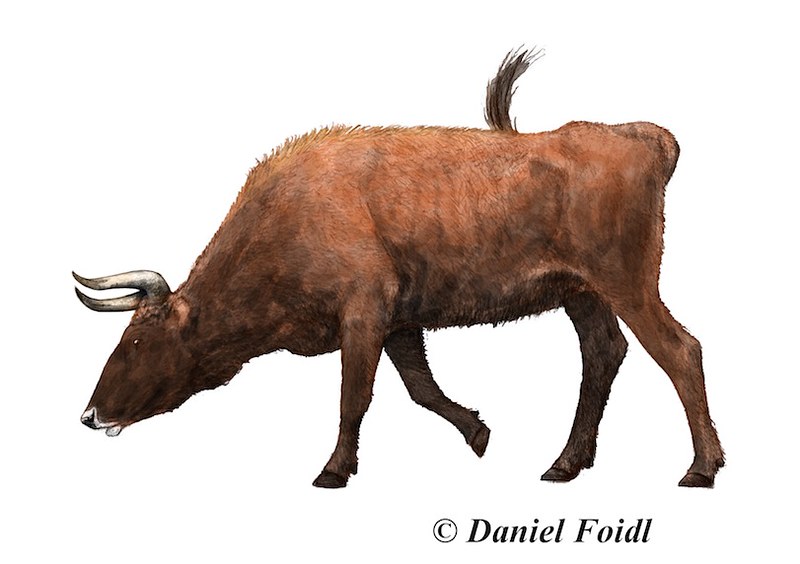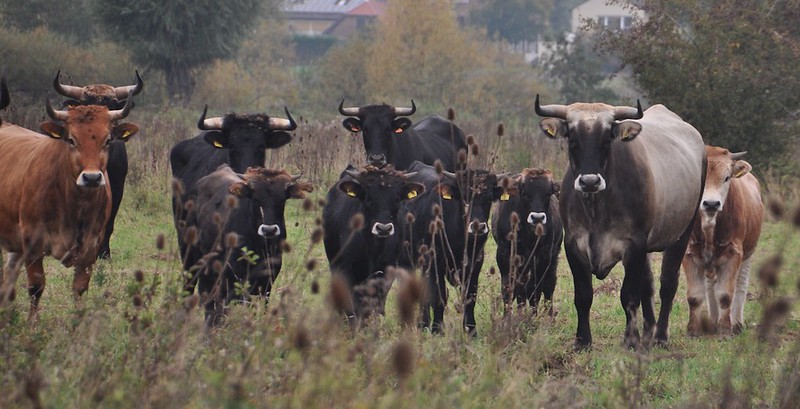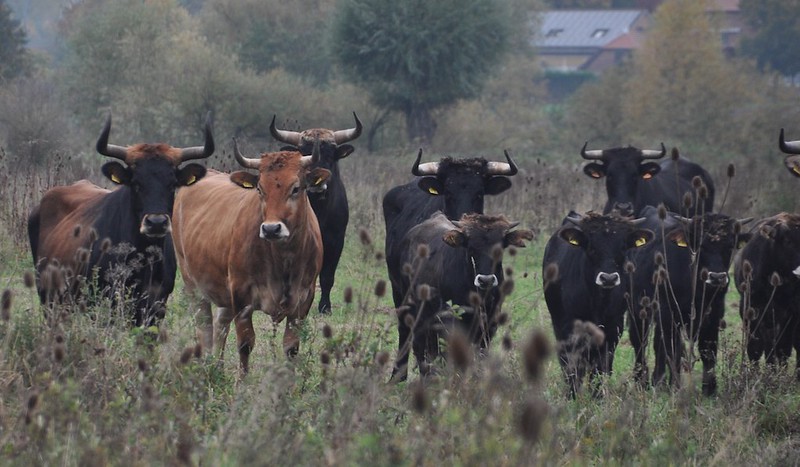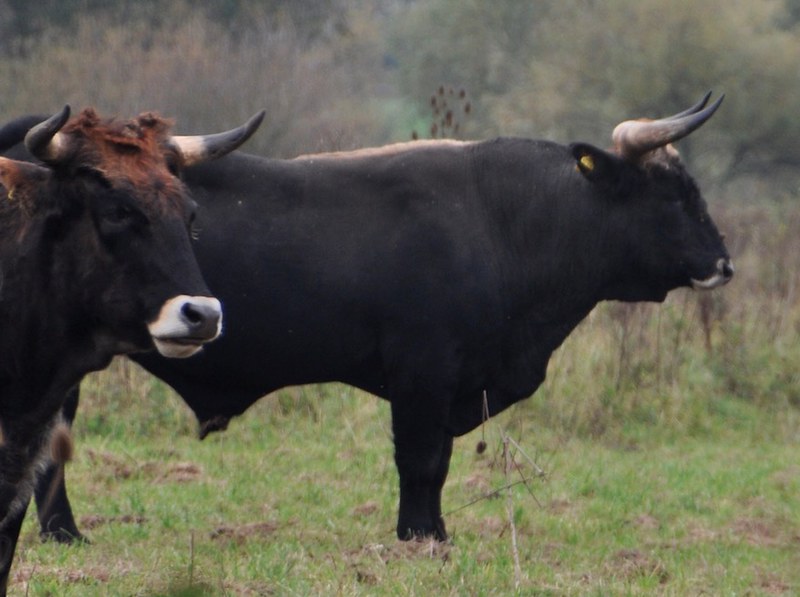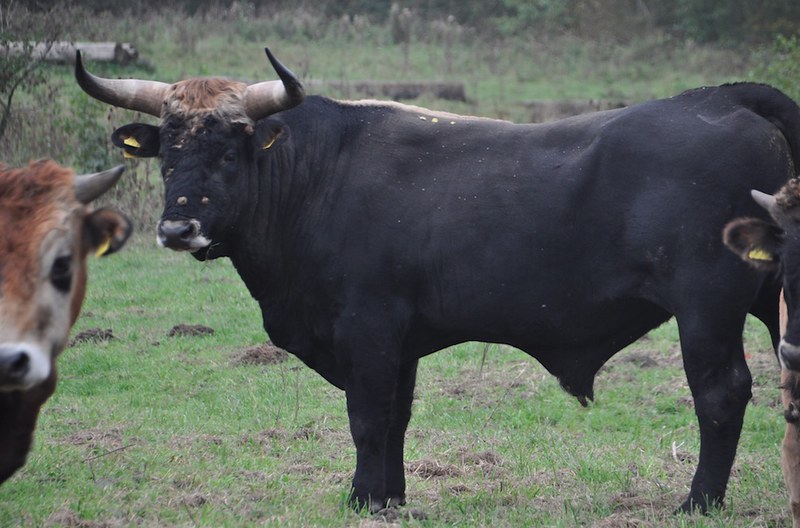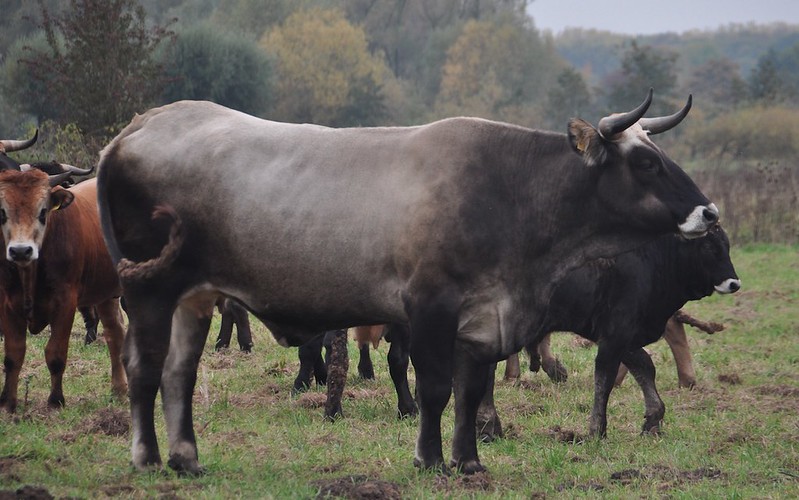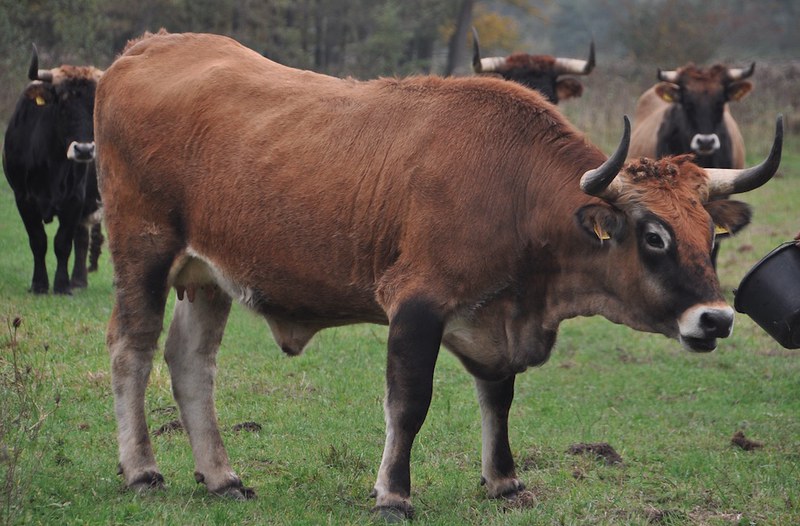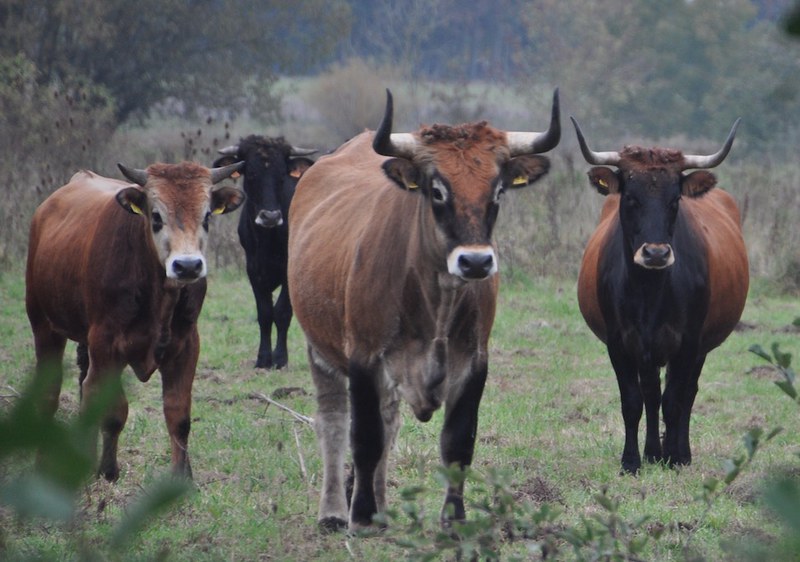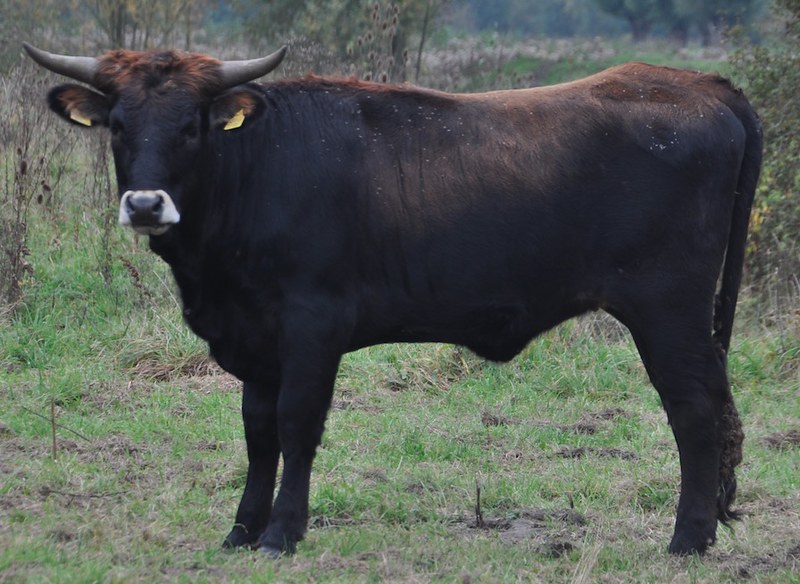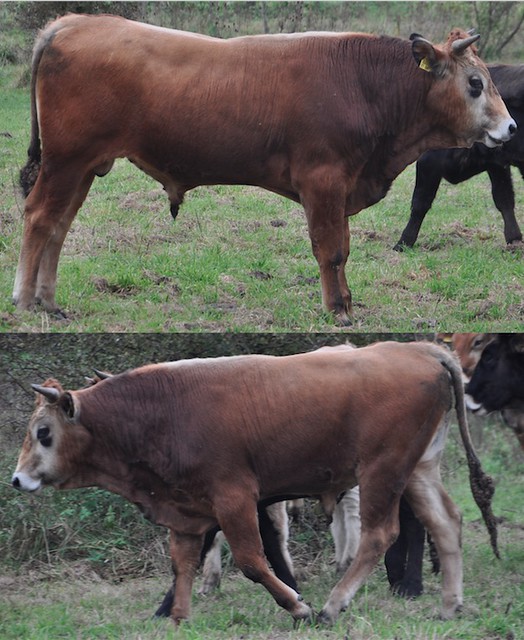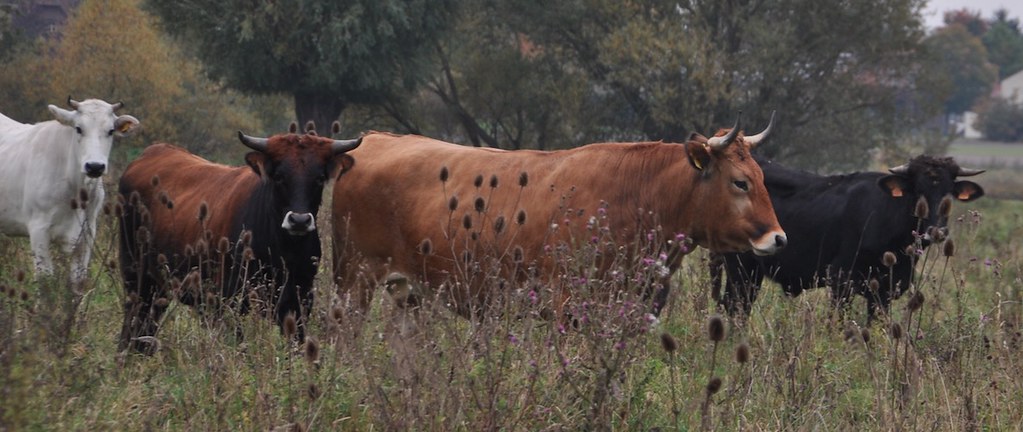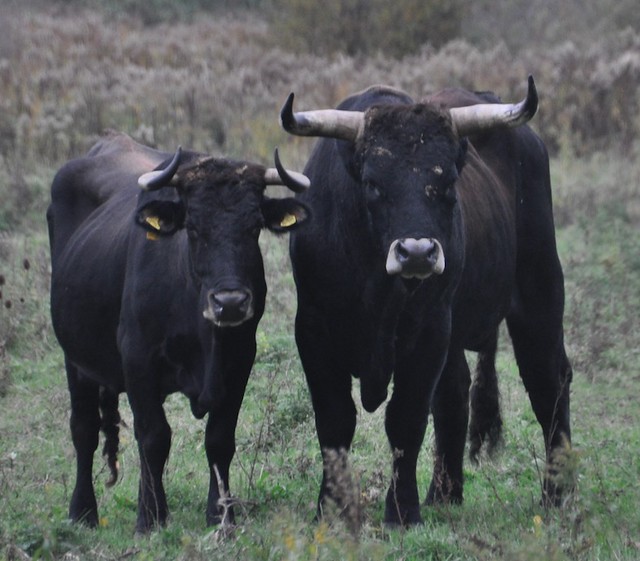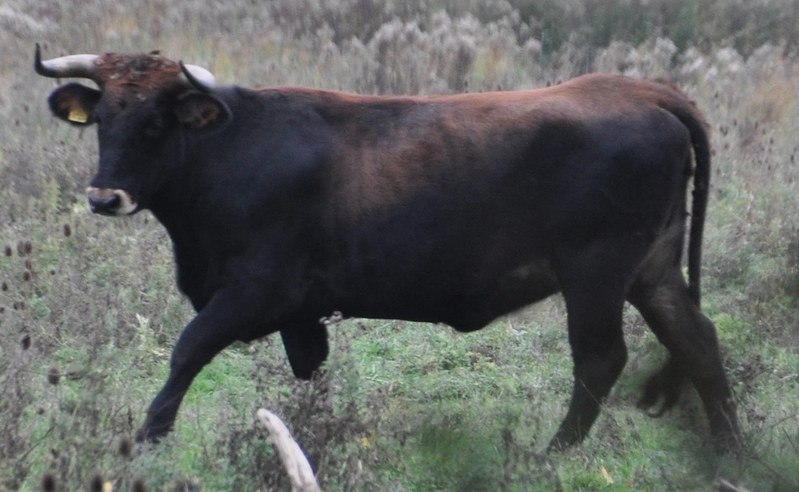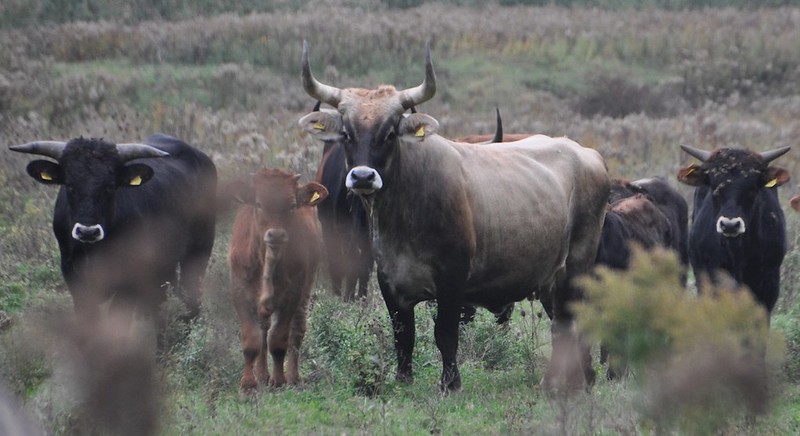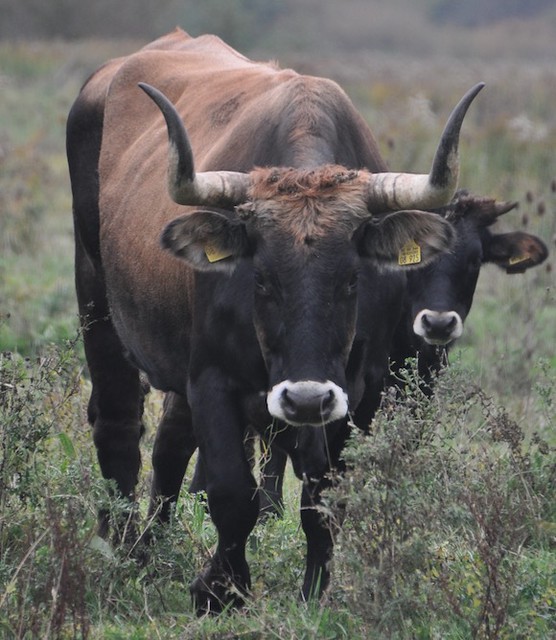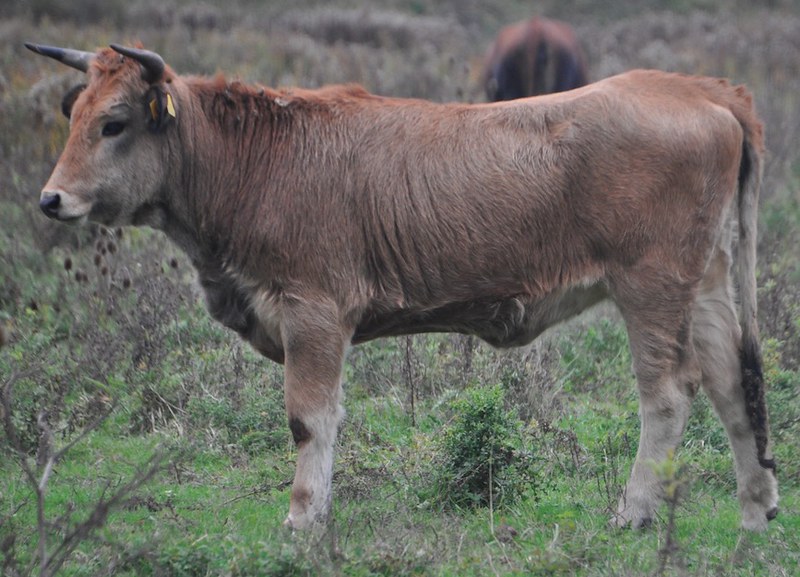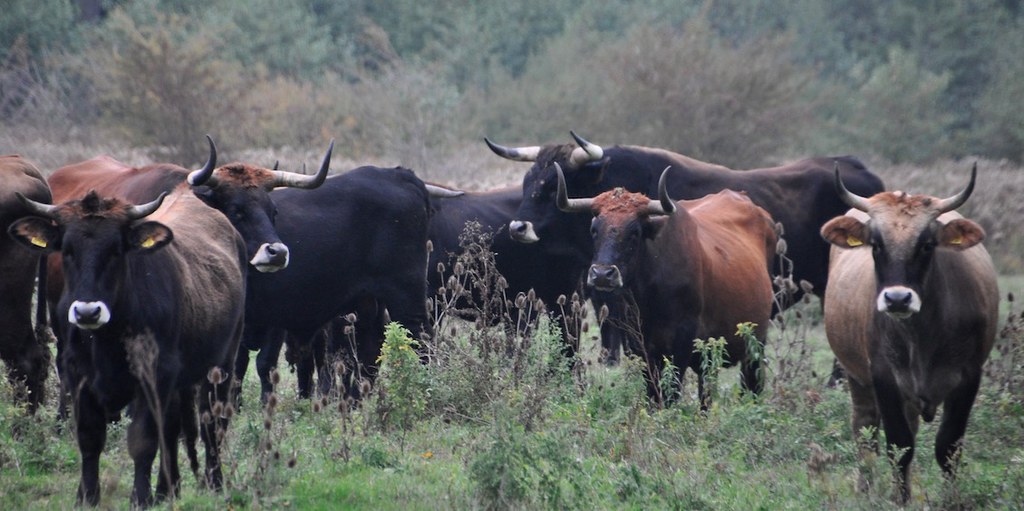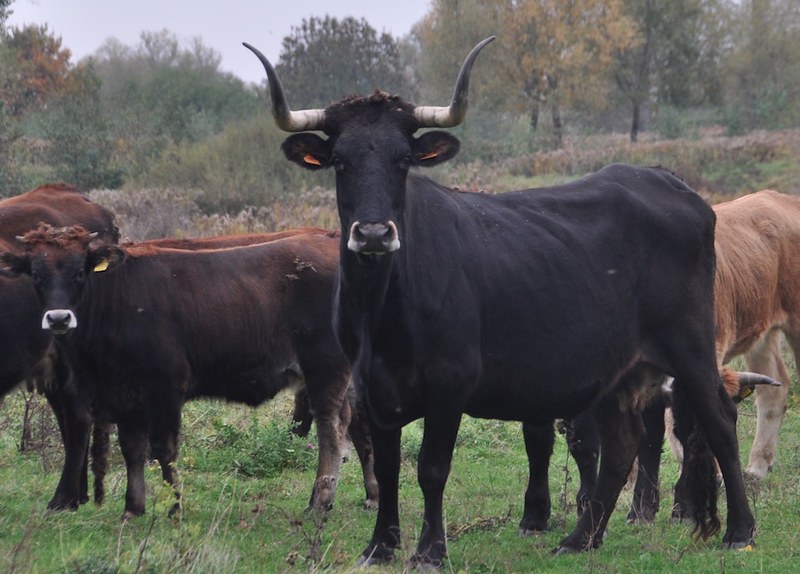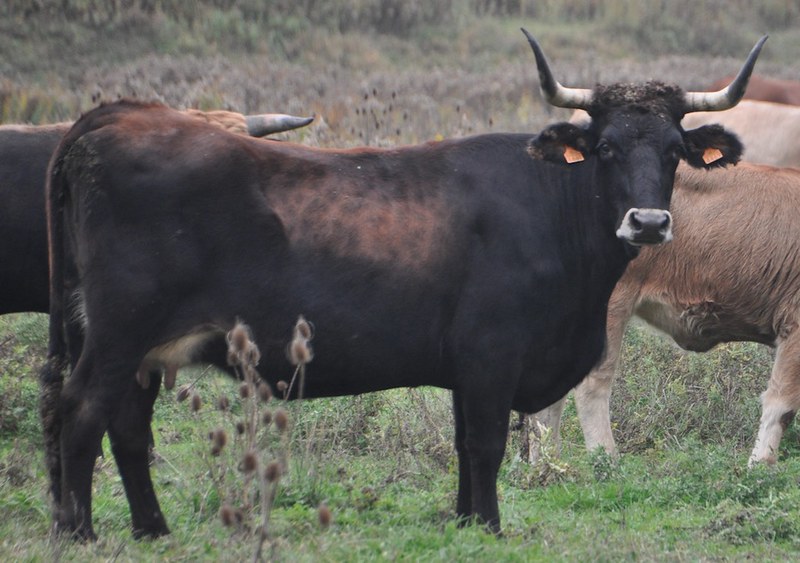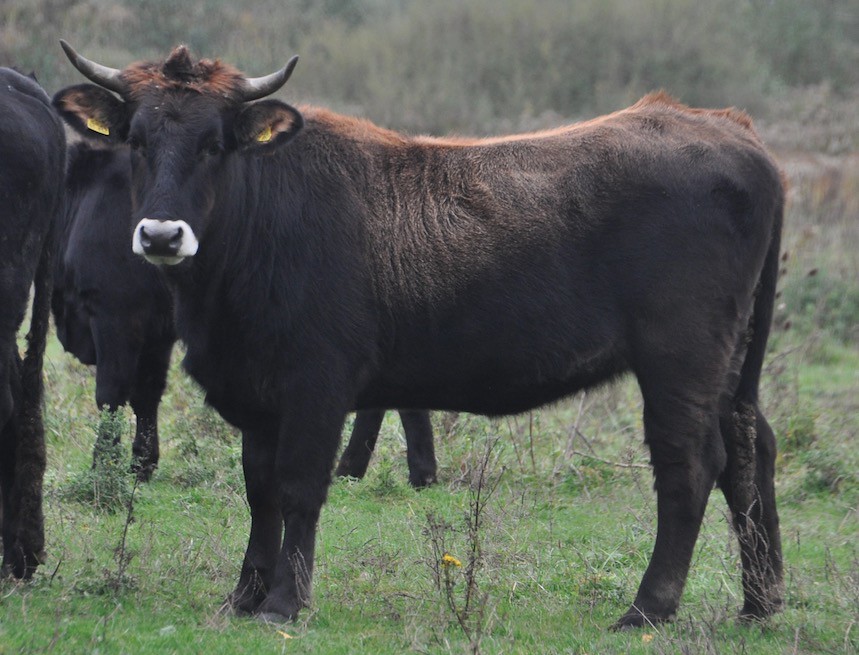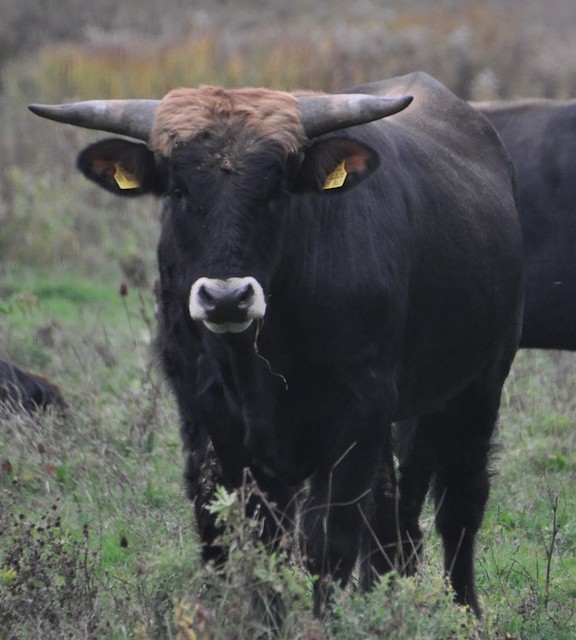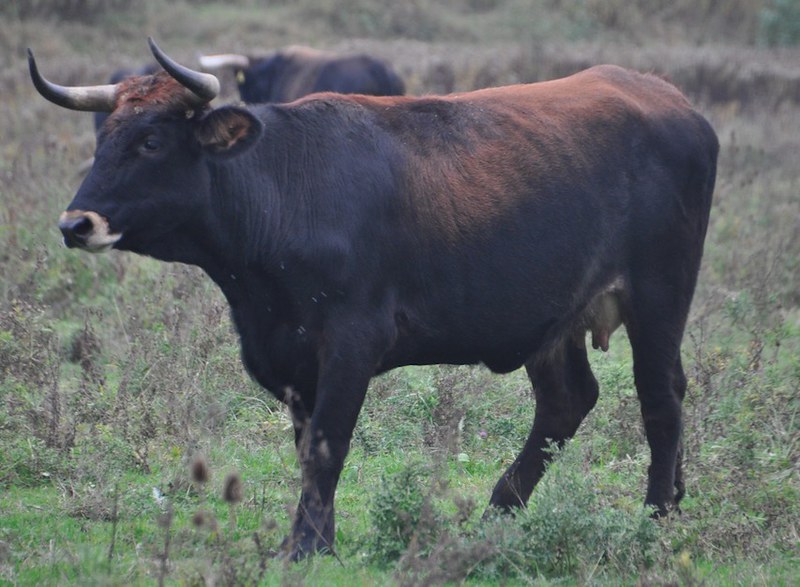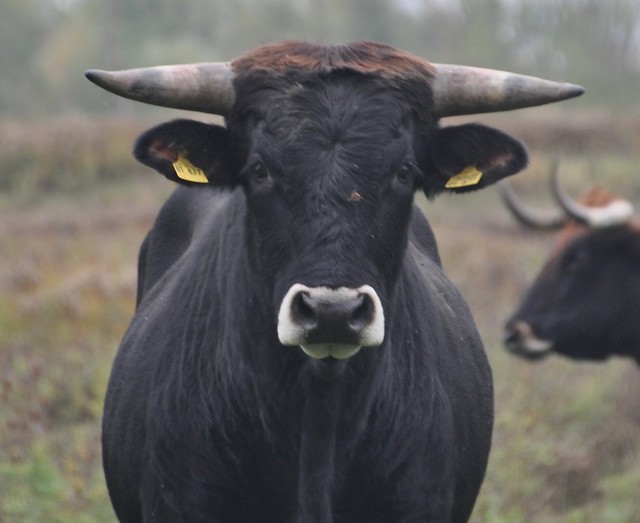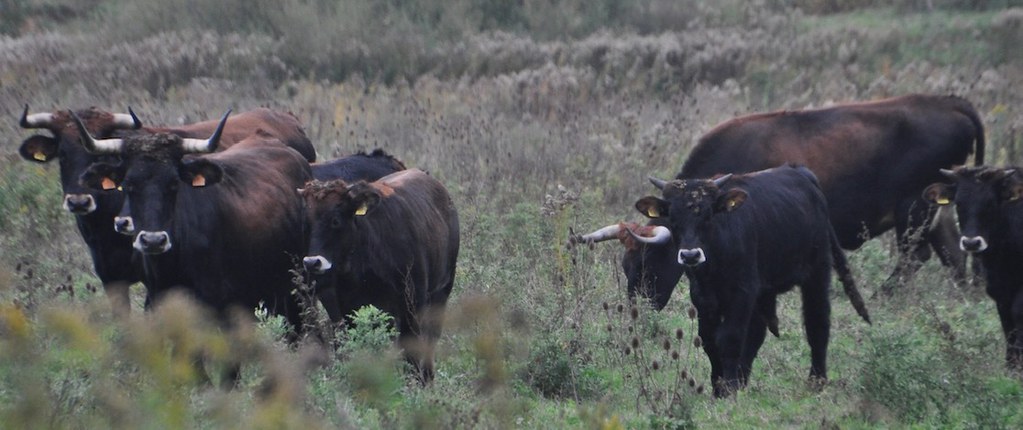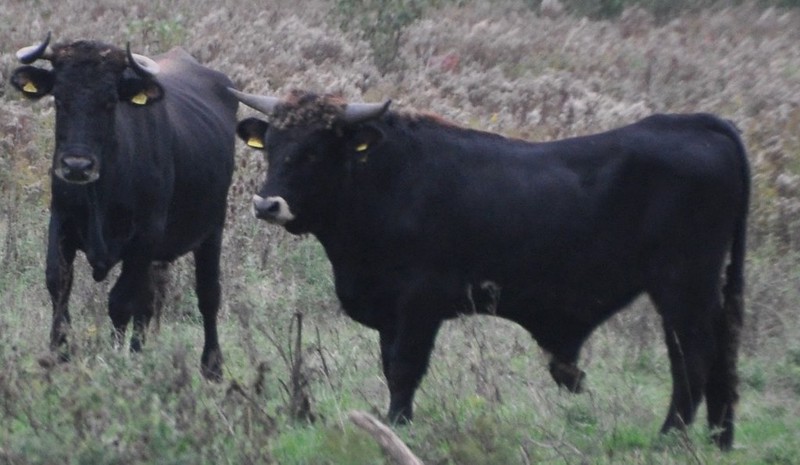Heck cattle
is not a revived aurochs, that’s no secret to those who are familiar with this
subject. It is also far from being a perfect optic copy. In the past, I heavily
criticised the work of the Heck brothers because of that – but how bad or good
was their work really? Did they do their best their possibilities allowed back
then, or where sloppiness, a lack of knowledge and care the reason why Heck
cattle “failed” the goal to mirror the aurochs in optical sense? In this post,
I try to evaluate if the Heck brothers could have done better considering their
time and abilities, if they made some crucial mistakes and what is positive
from modern perspective.
First of
all, we have to define what the Heck brothers had to do executing their
project, and then analyse how well they did it and if they could have done
better.
For the
ideas, thoughts, statements and actions of the Heck brothers given in this
text, see Cis van Vuure 2005 and Walter Frisch 2010. The latter source also
includes original texts written by the Heck brothers in German, if you want to
have a look at direct quotes.
1) Getting
a clear idea of the morphology and external appearance of the aurochs. That is
its size, bodily build, horns, coat and colour of the coat, and differences
between male and female.
2)
Researching on which cattle breeds have those traits and getting their hands on
them for breeding.
3) Doing
efficient breeding to unite those traits desired in order to create a complete
picture of the aurochs. #2, getting the right breeds, is essential for that of
course.
 |
| Painting based on a photo of "Nordland", a third-generation crossbull of Heinz Heck. All rights reserved. With highest probability, all living Heck and Taurus cattle have this bull in their ancestry. For more illustrations of historic Heck cattle, go here. |
What kind
of sources and material did the Hecks have to go on in order to get an accurate
impression of what the aurochs looked and was like during the 1920s and 1930s?
Well, actually everything that we have today. Although the quantity of skeletal
remains increased, probably multiplied, they did have more or less complete
skeletons, crania, horn cores and preserved horn sheaths. Also, the cave
paintings (except for Chauvet), stone engravings, Charles Hamilton Smiths
painting, Schneebergers and von Herbersteins reports all were known back this
time. So the Heck brothers had the possibility do know as much about the
aurochs’ morphology and external appearance as we do today. How well did they
do their homework?
Heinz Heck noticed
correctly that the size of the aurochs varied from region to region and he was
aware of the fact that the aurochs was considerably larger than most cattle today,
and considered its maximum size to be 2m at the shoulders. His brother Lutz,
however, seemingly totally underestimated the size of the aurochs and postulated
a size of only around 350kg (!) for bulls. I do not know how this is possible,
especially because I assume that he had seen aurochs remains himself, which
unambiguously tell you that the aurochs was a fairly large bovine (he did,
however, realize his obvious mistake in 1952, when his breeding project was
already over).
Regarding
body build, Heinz describes the aurochs as elegant and high on the legs in
1980. I do not know whether he was aware of that when he did his breeding
attempts in the 1920s-30s or not. Lutz Heck must have been aware of the
aurochs’ “elegant” and athletic build, as he appreciated that trait very much
in Lidia, Camargue and Corsicana. However, both brothers seemed to have worried
about the exact weight more than body shape, so they maybe assumed that bodily
build does not play an important role.
Heinz Heck claimed
the aurochs did not have a hump formed by high processus spinosi as the Wisent
does, which is evidently wrong as each more or less complete skeleton shows. He
also believed the aurochs had a slightly raised pelvis, for reasons unknown to
me.
The
distinction between female aurochs and male aurochs in the subfossil record
back then might have been not as precise as today (and I do not think that we
can tell both sexes apart for sure in each case as well today), but the Heck
brothers should have known that there was considerable size dimorphism alone because
it is mentioned in Schneeberger’s report. How much attention the brothers paid
to it is another aspect.
Concerning
the horns, Heinz Heck described them curving sideways, then forwards, then up
and therefore did not recognize the very clear inwards-curve that all aurochs
horns had. He claims that there was considerable variation regarding horns,
which is not true of the general curvature and orientation relative to the
skull. Lutz’s description is more vague, he merely compares them to those of
breeds such as Lidia, Camargue, Watussi, Longhorn, English Park cattle and
others – a set that also includes horn shapes that were not present in the wild
animal. Despite the fact that the basic curvature of the horns of the aurochs
was recognized and described in the scientific literature and numerous
well-preserved crania were known back then already, the brothers also used the
various and imprecisely illustrated horn types of the paintings in the Abrigo
de los Toros cave – a source that is highly unreliable for traits like horn
shape.
As regards
to colour, both Heinz and Lutz Heck knew the basic traits of the aurochs’ wild
type colour: very dark brown to black bulls, light-coloured muzzle ring,
reddish-brown cows, dorsal stripe. Heinz Heck assumed this stripe could have
also been broad (historic evidence only speaks of a narrow stripe), while Lutz
believed it was of red colour (historic and artistic evidence suggest a light or
greyish colour instead). Lutz also believed in a reddish colour saddle for
bulls, for which there is no evidence in Europe at least. Heinz Heck considered
brown or blond forelocks a wild type character, a trait that is widespread in
aurochs-like coloured cattle but for which there is no evidence in the Central
European aurochs. Heinz further states that their breeding-back attempt
revealed the “previously unknown” fact that aurochs were born being of a brown
colour and subsequently grew a darker coat. He seemingly overlooked that
Schneeberger in Gesner 1602 reports exactly this, and that it is a general
characteristic of wild type-coloured cattle, i.e. those that show an E+ expression. He further
states that the head of cows was lightly coloured, which is contradicted by
artistic evidence (cave paintings) and the colour scheme of extant E+ coloured cattle. Heinz
Heck also believed that both sexes had white eye rings as adults, for which
there is no clear evidence for, as well as for Lutz’s baseless statement that
there also were cows with of a lighter, greyish tone. Lutz also assumed the
presence of black cows, which is confirmed by cave paintings and Schneeberger’s
report on the other hand.
They both presumed
that the winter coat was longer than the summer coat and dense. This was
undoubtedly the case. The fact that aurochs had, like other wild bovines, a
barely visible udder must have been apparent to the Heck brothers as well.
As you see,
the Heck brothers did their homework, but it could have been more in-dept. It
also seems that they barely studied the scientific literature that had already
existed back then. They did have an idea what the aurochs’ morphology and appearance
were like, but it included inaccuracies, imprecisions and misconceptions as I
outlined, and they made some more or less baseless speculations. Also, they
completely forgot about the cranial morphology that differed from most domestic
cattle, at least I do not know of any notes on that. Therefore an animal that
would end up exactly like they described would necessarily not be entirely authentic
and might also have some definitive flaws.
The next
step for the Heck brothers was to locate and get their hands on the most
suitable cattle breeds for crossbreeding. The Heck brothers’ father, who had
been director of the Berlin Zoo as well, build up a large cattle breed
collection during his time. But this collection did not include cattle with all
the traits the brothers wanted, so they had to start a quest for particularly
aurochs-like cattle.
This was
during a time when it was not only uncertain where the aurochs was domesticated
and how many times, but there was also no internet, barely any breeding associations
to contact, and rural cattle populations very often had not been categorized in
distinct breeds yet and consequently there was no compelling literature either.
So, where to start? Scandinavia, Iberia, the alps, Balkan, Near East? The Heck
brothers researched in the literature and went on field trips in other
countries to locate suitable cattle – besides their jobs as zoo directors. I
think that’s laudable. And those cattle that they found to be suitable also had
to be purchased and imported. So if two men alone did not find the absolutely
most aurochs-like cattle in whole Europe, sloppiness is probably an unfair
explanation – it simply was not nearly as easy as it is these days.
Lutz Heck
discovered that there are a lot of Southern European cattle that bear striking
similarity to the aurochs. He was particularly impressed by Lidia, which he
considered the most aurochs-like cattle of all, as well as Camargue and
Corsicana. During the first years, he bred exclusively with those three breeds
because of their aurochs-like colour, elegance, horn shape and “wild character”
that he considered fitting. From the modern perspective, this combination would
lack body size and horn size, which both were traits that were not of much
importance for Lutz Heck. Later on, he incorporated also crossbreeds containing
Highland, Norwegian Fjäll, Hungarian Grey and English Park cattle; but he was
not impressed – Highland cattle contribute horns protruding sideward, Park
cattle ad Fjäll cattle both have a “wrong” colour that causes spots in
heterozygous state (we would classify that pattern as “colour-sided” today).
Furthermore, the latter has a dominant lack of horns, which Lutz did not like
(dominant traits, however, are easy to breed out).
Heinz Heck used
a Southern European breed as well, Corsicana. But he included a wider set of
breeds than his brother. Additionally to Corsican cattle with their
aurochs-like colour and forwards-facing horns and Grey cattle with their good
horn size and shaggy winter coat, he also included more derived and often
large-uddered Murnau-Werdenfelser, Angeln, Highland, black-pied lowland cattle
(original German: Schwarzbunte. Similar to Holstein-Frisian but smaller and not
as high-legged) and Braunvieh. Murnau-Werdenfelser have a typical domestic body
shape and their horns are not aurochs-like either, but some of them have a
useful colour. Angeln have, at least today, more or less long snouts (and in
some cases also useful horns and colour), but since neither of the Hecks ever
made a remark on that trait of the aurochs, it is probably not the reason why
Heinz included it. Braunvieh was used because of its comparably slender build
and is E+//E+
as well. Paradoxically, Highland, black-pied and maybe also English park were
included to “add mass”, on the other hand. Heinz Heck was aware of the fact
that a number of the breeds he chose barely contributed anything if nothing in
terms of optical similarity. But he regarded them as necessary to get as much
aurochs traits as possible, because he believed these breeds could add
“invisible traits” of the wild form that would surface from alone when the
breeds and their “old genes” are combined. A suspicion that, considering the
state of the art knowledge on heritage and genetics in the 1920s to 1930s, might
have been legitimate back this time.
After the
war, Heinz Heck noted that their experiments told them that a “bred-back
aurochs” is achieved at fastest by using Podolian cattle, Highland cattle,
Southern European cattle and Texas Longhorn (the mention of the latter is
curious because neither of the two used this breed). Speaking of the cattle’s
optics only, the inclusion of the derived breeds was a mistake – Heinz’ hope
for hidden ancient traits surfacing did not fulfil. But, retrospective, it
created a wider genetic base for the new breed than it would have been possible
using the primitive breeds they chose only.
Counting
the brothers' breed choices as one, the set up contained many aurochs traits,
with the exception of a truly elongated, not paedomorphic skull shape and body size
at least. For the latter trait, the Chianina could have been an option back
then – this breed was probably not an enigmatic one in the time between the two
world wars, as it has a long breeding history and is remarkable for its size.
So the Heck brothers should have, or at least could have, known about it. And
even if not, Heinz Heck noted that some Podolian bulls get very large (he
exaggerated it to up to 2m) – so either he was not able to get his hands on the
very large ones, or he did not consider it that important and was confident
with what he had. In 1980, he responded to the criticism that their cattle are
too small by calling this criticism false because the breeding-back attempt is
or was working against this size difference – which is incorrect, because it is
evident that large size was not one of the goals of the Heck brothers
experiments, and it was not until 1996 that someone actively bred for large
size by crossing in larger breeds (Taurus cattle).
The Heck
brothers did not keep track of their crossbreeding precisely, at least there
are no such documents known and many of their reports are only vague. As an
example, Heinz Heck for example stated in 1934 that he intended to further cross-in
English Park and to exchange bulls with his brother. Whether it happened or not
is unknown. Because of the lack of precise records, the exact descent of Heck
cattle post 1945 is nebulous. This was certainly sloppy, and one can consider
it another mistake. But technically it makes no difference, because it is about
the traits that are present in the population.
Nevertheless
there are other things to criticise. First of all, it starts with the often imprecise, sometimes speculative and partly inaccurate
idea of the aurochs the brothers had, that also neglected certain traits (f.e. body
size, build, udder size) or not even recognized (f.e. skull morphology), as
outlined above. With that as a base, their breeding products just had to have
flaws. Cis van Vuure, in his 2005 book, diagnoses “a lack of basic knowledge,
broad selection criteria and complacency”. There were numerous such undesirable
traits because of the diverse set of breeds they used. Due to their very loose
selection criteria, the Heck brothers seemingly permitted non-aurochs-like
traits such as all kinds of horn shapes and sizes, a greyish tone in the coat
colour of cows at least, colour saddle in bulls, and other traits that are
either incorrect or not supported by evidence. These “wrong” traits accompanied
with the neglected traits body size, build and skull shape. Furthermore, it is
not clear how much they cared about sexual dimorphism. Also it seems that udder
size plaid no role in their experiments as well.
Taking the
year 1945 as the benchmark to compare with, the result was not an optically
reconstructed aurochs, but ended up being a population of cattle that contained
a number of aurochs-like traits, but also a number of undesirable ones, and
traits such as horns, body size or build never were present in a satisfying
way. Therefore, the Heck brothers’ results were criticised early on in
scientific circles based on exactly these reasons. The Heck brothers, on the
other hand, seemingly were immune to criticism and failed to recognize deficiencies.
Partly because they did not know better (as outlined above), but perhaps also
because they did not want to see. They also wanted to see things that were not
there, such as the alleged optical match between the Berlin stock and the
Munich stock that should proof the success of their project – albeit there were
obvious differences between both stocks. They failed to scrutinize. On the
contrary, they were very confident, even euphoric, about their work and claimed
almost full success, what further contributed to ridicule made by more
down-to-earth colleagues. They certainly were not frauds, but perhaps victims
of self-deception to a certain degree. Their experiments were a lot of work,
surely also exciting and fun – so maybe their enthusiasm hindered them to see
and correct deficiencies. It was also this enthusiasm and complacency that
caused ridicule in zoological circles. And I think this is understandable,
since their basic idea (recreating a true aurochs by breeding with domestic
cattle, solely on optical grounds) is a gross oversimplification and
impossibility in the first place in any case.
So, how
well did the Heck brothers do their work?
- Their
idea of the aurochs was half correct; it was partly imprecise, took some
needless speculations for granted and contained some flaws. This would not have
been the case if they had researched more in-debt, (they had all the contemporaneous
literature and most of the contemporaneous art we have today, plus the scientific
literature on the aurochs that had existed back then) and if they had taken a
closer look at the skeletal material that was sufficient back then already.
- A number
of traits were simply neglected, such as body size and build, udder size, or
the elongated skull shape that they failed to recognize. Consequently, these
traits were also neglected in their breed choice and selective breeding.
- As a
consequence, their selection criteria were too loose regarding a number of
traits. For example, they tolerated a way too large range of horn types –
looking at the bones would have told them. Another example is their conceptions
about fur colour, which included needlessly speculative variants. It also seems
that they did not worry about udder size as much as they did not worry about
body size, build and skull shape.
- Within their
possibilities, the set of breeds they collected was not that bad. It had aurochs
traits such as a correct fur colour, sufficient horn size and an acceptable
curvature. Lutz Heck’s breed choice also included slender and elegant cattle –
a trait that his brother did not care that much about. What was generally
lacking was a breed that would have contributed large size. Either such
breeds/individuals were not available for them, or they (i.e. Heinz, since Lutz
was assuming a way too small size for the aurochs) did not care enough. Based
on their statements and confidence, large size was definitely neither a
priority nor goal in their experiments.
The breeds
chosen by Heinz Heck, which are most likely the sole basis of the modern Heck
cattle population (except the brothers did exchange some individuals), included
such with many less than desirable traits; he chose them for reasons outlined
above, and back these days his assumption of invisible traits that might
surface again was probably not unjustified. It did not come true however, and
introduced a lot of undesirable traits.
- The lack
of precise notions on the crosses carried out, as well as if they exchanged
individuals, was sloppy and leaves open question on the cattle’s exact descent.
But, on the other hand, this does not alter the traits that were and are
present in the population. - Due to their lack of will to scrutinize their work
as much as their immunity to fact-based criticism, they did not see or accept
the deficiencies pointed out by other contemporaneous zoologists and therefore
made no efforts to correct them.
All in all,
the Heck brothers could have done their work better given the time and
possibilities they had. More careful research would have resulted in an idea of
the aurochs’ morphology and appearance that is identical to other modern one.
Stricter selection criteria would have limited the number of undesired traits,
and they also should not have ignored or neglected certain traits and taken a
closer look at the bones. With that as a base, their results probably would
have been better. On the other hand and to be fair, even if they had an ideal
set of breeds, the fifteen to twenty years of time they had would have probably
been not sufficient stabilize an aurochs-like appearance in a fully satisfying
way (as we know from breeding today).
Although
the Hecks did make mistakes and did some tasks not thoroughly enough, their
effort of looking for suitable breeds, purchasing and importing them on their
own is laudable. And however unsatisfying the end result was, it was the Heck
brothers’ project that started the whole breeding-back idea. I wonder if,
hadn’t there been the Hecks’ experiments, there would be the modern
aurochs-projects at all – only if someone else came up with that idea.
In spite of
their failure to create an optical aurochs, the Hecks reached one of their
goals: to rescue the aurochs from oblivion and get it into the mind of people
again. Probably a lot less people would know about this animal today if not zoo
visitors from the 1930s onwards were seeing those cattle wrongly tagged as
“aurochs”. I was also surprised how many non-scientific animal guides include
this animal.
Their
cattle (again, taking 1945 as a benchmark) were actually useful animals to work
on. Despite of all its deficiencies, the population did contain a number of
aurochs traits and had potential. All the optically useless breeds that Heinz
Heck included added genetic diversity: His set of breeds included cattle from
southern Europe, Northern Europe and Central Europe. This genetic diversity was
apparently enough to allow a population growth from less than 50 in 1945 to
more between 3000-2000 animals nowadays without having any signs of inbreeding
depression. In fact, thanks to their genetic diversity and the use of hardy,
healthy and cold-resisting breeds Heck cattle turned out to be a very useful
breed for natural grazing, and these traits are also very useful for further
“aurochs” breeding. No matter how much one might dislike that breed for its
general lack of traits like size, inwards-curving horns, and their small,
stubby body with their short, calf-like heads, one cannot alter this fact.
In the end,
we, in 2015, might even have to be thankful to the Heck brothers and their
experiment, even though they could have done their work better.
You might also find this article interesting: Heck cattle - a bred-back aurochs, a total flop or just aurochs-like cattle?




